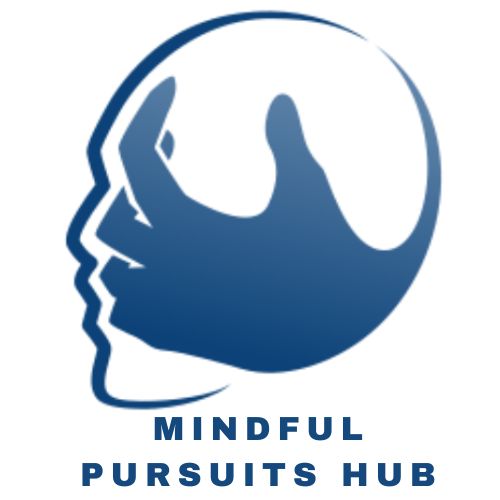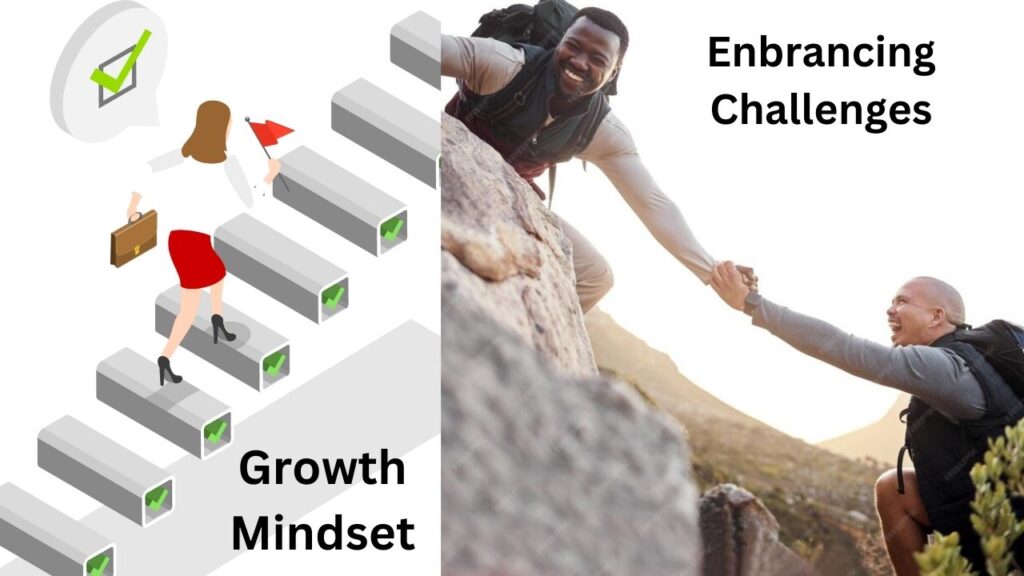Self-confidence is a powerful attribute that can transform your life. It empowers you to pursue your goals, take risks, and believe in your abilities. However, self-doubt, its counterpart, can be a formidable obstacle. It creeps into your thoughts, undermines your confidence, and holds you back from reaching your full potential. This article examines the concepts of self-confidence and self-doubt, their underlying causes, and provide actionable strategies to build self-confidence and conquer self-doubt.
Jump to Section:
ToggleUnderstanding Self-Confidence and Self-Doubt
Self-Confidence
Self-confidence is the belief in your abilities and judgment. It is the inner assurance that you can handle challenges, achieve your goals, and navigate life’s ups and downs with poise. Self-confident individuals tend to be more resilient, optimistic, and willing to take risks. They radiate a sense of self-assuredness that attracts opportunities and positive outcomes.
Self-Doubt
Self-doubt, on the other hand, is the nagging inner voice that questions your abilities and undermines your self-esteem. It thrives on fear and uncertainty, causing you to second-guess your decisions and hesitate in taking action. Self-doubt can be paralyzing, preventing you from pursuing your aspirations and making the most of opportunities that come your way.
The Impact of Self-Confidence and Self-Doubt
Self-confidence and self-doubt have far-reaching effects on various aspects of your life:
1. Professional Success
Self-confident individuals are more likely to pursue challenging careers, seek promotions, and take on leadership roles. They project competence and attract opportunities for career advancement. Conversely, self-doubt can hinder career progression. It may lead to missed opportunities, reluctance to voice opinions, and a tendency to undersell one’s abilities.
2. Personal Relationships
Self-confidence enhances your ability to form meaningful and healthy relationships. It allows you to express yourself honestly, set boundaries, and engage in open communication. Self-doubt can strain relationships, leading to insecurity, jealousy, and an inability to trust others.
3. Mental Health and Well-Being
Self-confidence contributes to mental resilience and emotional well-being. It helps you cope with stress, setbacks, and life’s challenges with greater equanimity. Self-doubt can lead to anxiety, depression, and low self-esteem. It fuels negative thought patterns that erode mental health.
4. Goal Achievement
Self-confident individuals set ambitious goals and pursue them with determination. They persist in the face of obstacles and believe in their ability to achieve what they set out to do. Self-doubt can derail goal achievement. It fosters a fear of failure, making individuals hesitant to set goals or give up prematurely.
Causes of Self-Doubt
Self-doubt can stem from various sources. Understanding these sources is the first step in overcoming self-doubt:
1. Past Failures
Previous setbacks or failures can erode self-confidence. Negative experiences may lead to the belief that you’re not capable of success.
2. Comparisons with Others
Comparing yourself to others, especially on social media which is always unreal, can trigger self-doubt. Unrealistic comparisons can make you feel inadequate.
3. Negative Self-Talk
Internal dialogue can reinforce self-doubt. If you constantly tell yourself that you’re not good enough or don’t deserve success, it becomes a self-fulfilling prophecy.
4. Fear of Rejection or Criticism
The fear of rejection or criticism can stifle self-confidence. It may lead to avoidance of situations where you could face judgment or disapproval.
5. Perfectionism
Striving for perfection can lead to self-doubt because perfection is an unattainable standard. Focusing on flaws and mistakes rather than progress can breed self-doubt.
Strategies for Building Self-Confidence and Conquering Self-Doubt

Building self-confidence and overcoming self-doubt is an expedition that requires time, decisive and practical steps. Below are the actionable strategies to help you along the way:
1. Setting and Achieving Small Goals
Breaking down larger objectives into smaller, more achievable tasks is a powerful strategy for building self-confidence. When faced with a daunting goal, it is easy to succumb to self-doubt. However, by deconstructing the objective into manageable steps, you create a roadmap for success. Each completed task becomes a tangible accomplishment, reinforcing your belief in your abilities. Celebrate these small victories, acknowledging the effort and determination invested. Over time, the accumulation of these successes reshapes your self-perception, fostering a more positive and confident mindset.
Moreover, the act of setting and achieving small goals allows you to track your progress, providing evidence of your capabilities. This evidence becomes a powerful counterargument to self-doubt. The satisfaction derived from completing tasks gradually boosts your self-esteem, empowering you to tackle more significant challenges with a newfound belief in your competence.
2. Practicing Positive Self-Talk
Another effective strategy for building self-confidence is to engage in positive self-talk. The way we speak to ourselves internally significantly influences our self-perception. Identify and challenge negative thoughts, replacing them with affirmations that emphasize your strengths and abilities. For example, instead of dwelling on mistakes as a sign of failure, view them as opportunities for learning and growth. Consistent positive self-talk helps to rewire your thought patterns, reducing the impact of self-doubt.
Creating and regularly repeating affirmations is a proactive way to embed positive beliefs about yourself. These affirmations should focus on your capabilities, resilience, and past achievements. Surrounding yourself with positivity extends beyond self-talk; seek out supportive individuals who uplift and encourage you. By consciously cultivating a positive internal dialogue and fostering positive external influences, you create a more nurturing environment for personal growth and self-assurance.
3. Cultivating Competence Through Skill Development
One powerful way to build self-confidence is by investing time and effort into developing your skills. Acquiring new competencies or honing existing ones not only enhances your abilities but also provides tangible evidence of your growth and capability. Identify areas where you would like to improve or learn something new, and set specific, measurable goals for skill development. As you see progress in your abilities, your confidence naturally increases. Additionally, the process of learning itself can be empowering, fostering a mindset that welcomes challenges and views mistakes as part of the learning journey. By consistently expanding your skill set, you build a foundation of competence that acts as a buffer against self-doubt.
4. Visualization and Positive Imagery
Visualization is a powerful technique to conquer self-doubt and enhance self-confidence. Take time to vividly imagine yourself successfully navigating challenges and achieving your goals. Picture the details – the sights, sounds, and emotions associated with your success. This mental rehearsal conditions your mind to perceive success as not only possible but probable. Engaging in positive imagery can counteract negative self-talk and doubts by creating a mental image of yourself as a capable and accomplished individual. This technique is often used by athletes to enhance performance, and it can be applied to various aspects of life. Regularly visualize your success, and over time, you will find that your subconscious mind starts to align with these positive images, boosting your confidence when facing real-world challenges.
5. Embracing Failure as a Stepping Stone
A key aspect of building self-confidence is changing the way you perceive and respond to failure. It was Robert South who observed that “Defeat should never be a source of discouragement but rather a fresh stimulus.” Instead of viewing failure as a final outcome or a reflection of your abilities, see it as a natural part of the learning process. Understand that setbacks and mistakes offer valuable lessons and opportunities for growth. By reframing failure as a stepping stone rather than a stumbling block, you shift your mindset towards resilience and perseverance. Analyze what went wrong, extract lessons, and use that knowledge to approach similar situations with newfound wisdom. Embracing failure as a teacher allows you to confront challenges with a more positive and confident attitude.
6. Surrounding Yourself with Positivity
The people and environments you surround yourself with play a crucial role in shaping your self-confidence. Choose to be around individuals who uplift, support, and encourage you. Surrounding yourself with positivity includes not only people but also the content you consume, the places you frequent, and the activities you engage in. Minimize exposure to negativity, whether it is toxic relationships, self-deprecating thoughts, or environments that bring you down. Actively seek out situations that nurture your self-esteem and provide opportunities for positive reinforcement. A positive support system can act as a powerful buffer against self-doubt, offering constructive feedback and reminding you of your strengths during challenging times.
7. Building a Supportive Network
The corollary to surrounding yourself with positivity is to build a supportive network. Creating a strong support network is instrumental in building and maintaining self-confidence. Surround yourself with people who believe in your capabilities and genuinely want to see you succeed. Share your goals and aspirations with friends, family, or mentors who can provide constructive feedback, guidance, and encouragement. A supportive network not only boosts your confidence but also serves as a safety net during challenging times. Knowing that you have people who believe in you can be a powerful motivator, helping you navigate self-doubt and overcome obstacles. Regular interactions with a positive and supportive community reinforce your sense of self-worth and contribute significantly to building lasting confidence.
8. Mindfulness and Self-Reflection
Practicing mindfulness and engaging in self-reflection are effective tools for conquering self-doubt. Set aside time for introspection, allowing yourself to explore your thoughts and feelings without judgment. Mindfulness techniques, such as meditation or deep breathing exercises, can help you stay present and centred, reducing anxiety and negative self-talk. Through self-reflection, identify patterns of self-doubt and the underlying beliefs that contribute to them. Challenge these beliefs by evaluating their accuracy and considering alternative, more empowering perspectives. Regular self-reflection fosters a deeper understanding of yourself, allowing you to cultivate self-compassion and a more realistic and positive self-image. As you become more attuned to your thoughts and emotions, you gain greater control over your mindset, contributing to increased self-confidence over time.
9. Positive Affirmations and Journaling
Incorporate positive affirmations and journaling into your daily routine. Positive affirmations are short, positive statements that you repeat to yourself regularly. These statements are designed to challenge and overcome self-sabotaging and negative thoughts. Write down affirmations that resonate with you and address specific areas of self-doubt. Repeat them daily, especially in moments of uncertainty. Journaling is another powerful practice that can help you track your progress, identify patterns of self-doubt, and celebrate your achievements. Count your blessings and name them one by one! Write about your successes, no matter how small, and reflect on the strengths and skills you utilized to overcome challenges. Over time, this written record becomes a tangible reminder of your growth and capabilities, reinforcing a positive self-image and boosting self-confidence.
10. Taking Incremental Risks and Stepping Out of Your Comfort Zone
Challenging yourself by taking calculated risks and stepping out of your comfort zone is a proactive way to build self-confidence. Identify areas where you feel hesitant or fearful and set small, achievable challenges for yourself. As you successfully navigate these challenges, you will prove to yourself that you are capable of handling new and unfamiliar situations. Each small victory adds to your reservoir of confidence, and you gradually expand the boundaries of your comfort zone. This process not only builds confidence but also fosters adaptability and resilience, essential qualities for personal and professional growth. Remember, the goal is not to eliminate all fear but to demonstrate to yourself that you can move forward despite it, cultivating a sense of courage and confidence in your abilities.
Conclusion






